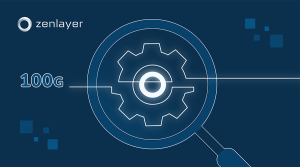Today, many enterprises face immense pressure to deliver and update digital content at a high speed – especially e-commerce sites and software-as-a-service providers.
Here’s why:
The internet is powerful, but it wasn’t meant to handle dynamic applications and content. Standard Internet protocols hinder performance and present a challenge when slow page load times can be detrimental to customer satisfaction and conversion rates. Broadband connections and web accelerated hardware and software can alleviate the problem to a certain degree, but the architecture of the Internet still impedes quick delivery of content delivery and cloud applications.
So, where does dynamic site acceleration fit into the equation?
Introduction to Dynamic Site Acceleration
The middle-mile is the section of the internet that links a network operator’s core network to a local network plant, which has ports that connect end-users. But the middle-mile also causes the largest latency variation in the entire network pipeline. Dynamic site acceleration helps counter this problem by optimizing the middle-mile and high-latency networks. Ultimately, dynamic site acceleration is an assortment of techniques that facilitate the efficient running of dynamic websites.
How it works
To deliver dynamic content successfully, continuous connectivity between the application server and the end-user is paramount.
Unfortunately, due to narrowband transmission, the Internet’s archaic TCP/IP protocol architecture struggles to attain this type of connectivity. During the download phase of a web page, HTTP and TCP concurrently initiate back-and-forth exchanges that cause delays. Furthermore, every TCP connection causes a delay of one round-trip between the server and the end-user, and several more round-trips are necessary to complete a transfer.
Dynamic site acceleration combats these issues while reducing packet loss. By utilizing a pool of open connections and increasing TCP throughput, it minimizes the number of round-trips. This results in faster network-server interactions and faster application response times.
Using Dynamic CDN for reliability and speed
A CDN (Content Delivery Network) delivers content to users in locations worldwide at a high speed. It’s also more reliable since it decides the data center node where content will reach the end-user based on their connection latency, proximity, and speed. In most cases, a CDN selects the fastest path between the server that holds dynamic web content and the end-user for optimal performance.
CDN combats HTTP and TCP inefficiencies by optimizing large chunks of dynamic and non-cached content. In addition, it increases application availability and reduces response times significantly. The CDN doesn’t distribute content or code across a network; rather, it utilizes a performant transport protocol on the middle-mile.
Network optimizations to consider
One of the key goals of dynamic site acceleration is to utilize the entire TCP/IP stack to its fullest across the middle-mile. System administrators should consider the following network optimizations:
- Decrease the load on your servers to reduce costs, eliminating connection errors for critical applications and legacy protocol overheads.
- Enhance application layer performance.
- Improve performance on long-haul segments of the network.
Dynamic site acceleration is a critical component of the modern Internet, as it provides users with a high-quality experience by allowing smooth and speedy access to dynamic web content.
Is your organization looking to optimize and accelerate the delivery of your apps and interactive content?
Contact a Zenlayer expert to discover how we can help.







